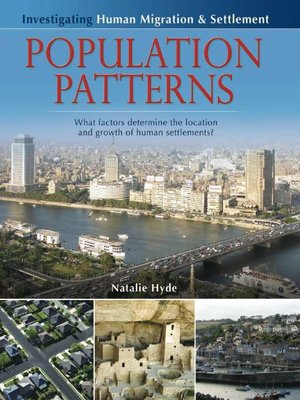Population Patterns
ebook ∣ What Factors Determine the Location and Growth of Human Settlements? · Investigating Human Migration & Settlement
By Natalie Hyde

Sign up to save your library
With an OverDrive account, you can save your favorite libraries for at-a-glance information about availability. Find out more about OverDrive accounts.
Find this title in Libby, the library reading app by OverDrive.



Search for a digital library with this title
Title found at these libraries:
| Library Name | Distance |
|---|---|
| Loading... |
Why do people migrate to and settle in the places they do? Fascinating examples in history help explain how the earliest human settlements were situated close to fertile ground and rivers for farming and raising livestock. Other determining factors have included areas that offered defensive advantages, resources such as metals, salt, and fossil fuels, and locations on trading routes. In modern times proximity to commercial centers and transportation links, such as railways, canals, and airports, have become more important. Examples featured include settling the Nile in ancient Egypt; the shaping of Central America by trade and colonization; the Industrial Revolution in Britain; the opening up of the American West; the Gold Rush; and the colonization of Australia. The concepts of urbanization—the settlement and growth of cities—and suburbanization, the return to the countryside and the growth of commuter towns, are both examined.







